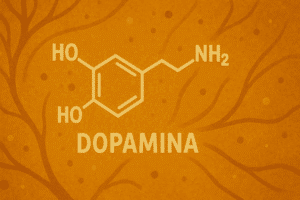In the annals of prehistory, Neanderthals emerge as fascinating figures, our evolutionary cousins who shared the Earth with Homo sapiens. Their story is marked by intrigue and revealing scientific discoveries. In this post, we will talk about who the Neanderthals were, how they lived, and the genetic legacy they left in us.
Physical Characteristics and Habitat of Neanderthals
Neanderthals, adapted to European and Asian environments, were skilled survivors in cold climates during a period that extends from about 400,000 to 40,000 years ago. With their compact bodies and short limbs, they were exceptionally adapted to conserving heat in glacial conditions. To cope with the cold, Neanderthals wrapped themselves in well-tanned, skillfully cut and sewn furs. At dusk, they would gather around a crackling fire used for cooking and warmth.
Physically robust, Neanderthals had a unique facial structure with prominent noses and large eye orbits. This adaptation was not only aesthetic but functional, helping them humidify and warm the cold air they breathed. Hunting was a communal activity, with men and women working together to track and capture prey. They were skilled hunters with very advanced stone tools with which there is evidence they captured large mammals, such as mammoths, bison, or reindeer. Efficient hunting was essential for surviving the rigors of the Paleolithic.

Shelters could range from simple branches in caves to complex structures made of bones and hides. These dwellings not only offered protection against the elements but were also the heart of Neanderthal social and cultural life.
Encounters between Neanderthals and Homo Sapiens
The relationship between Neanderthals and Homo sapiens has been widely studied and debated in the scientific community. Currently, the evidence gathered supports the encounter between both groups since they shared territories in Eurasia about 40,000 years ago. DNA tests reveal that there was interbreeding between these two species, leaving a unique genetic legacy.
On the other hand, archaeological evidence suggests that they may have exchanged technology and culture. Some archaeological sites have shown Mustierian stone tools, typically associated with Neanderthals, alongside Aurignacian tools, generally associated with modern humans. Personal artifacts and ornaments have also been found at sites previously inhabited by Neanderthals, which could indicate cultural influence or direct exchange between the two species.
However, the degree of contact and the nature of the interactions between Neanderthals and modern humans is still a topic of active research and debate. These interactions could have ranged from competition for resources to cooperation and cultural mixing. As more evidence is discovered and analyzed in the field of paleoanthropology, our understanding of these relationships continues to evolve.
Enduring Genetic legacy of Neanderthals
The genetic inheritance of Neanderthals endures in our current biology. About 1-4% of the genome of contemporary non-African populations carries the genetic signature of Neanderthals. The genetic inheritance of Neanderthals has left a distinctive mark on our biology, contributing to adaptations that have influenced our survival and adaptation to specific environments. Some of the Neanderthal-acquired variants that have been identified and play crucial roles are:
- Disease Resistance: Neanderthals contributed genes related to resistance to certain diseases, which might have provided advantages in environments where certain pathologies were prevalent.
- Immune Response Regulation: Genes associated with the immune response, which probably helped them to cope with environmental conditions and infectious threats specific to their environments.
- Adaptations to Local Climates: Genes related to adaptation to specific climates, such as those that influence the regulation of body temperature, skin pigmentation and the ability to metabolize certain nutrients in particular environments.
- Increased Blood Clotting Capacity: Some Neanderthal genes have been associated with increased blood clotting capacity, which could have been beneficial in reducing the risk of hemorrhage, especially in hunting situations or confrontations with other groups.
- Protection against sunburn: Some Neanderthal genes related to skin pigmentation offered protection against solar radiation in environments with high levels of sun exposure.
These are just a few examples of how Neanderthal genetic inheritance has contributed to our evolutionary adaptation. Each of these genes has played a crucial role in the ability of Homo sapiens to survive and thrive in diverse environments throughout history.
Can I know how much of my genetics come from Neanderthals?
Neanderthals, far from being mere "cavemen," were a remarkable species with adaptive abilities and a rich history of encounters with Homo sapiens. Their legacy lives not only in the pages of prehistory but also in our DNA, reminding us that our story as Homo sapiens is intertwined with that of these ancient relatives. In every corner of our biology, we carry the distinctive mark of the Neanderthals, a lasting connection to those who populated the Earth before us.
Find out how much Neanderthal you have in you in ADNTRO with our ancestry dna testing!














